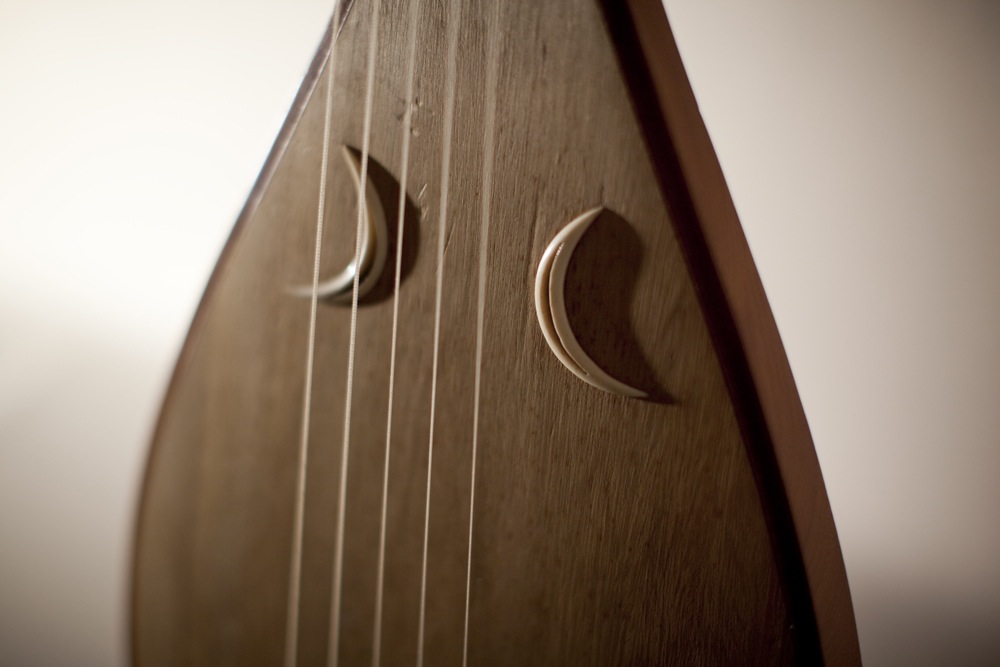

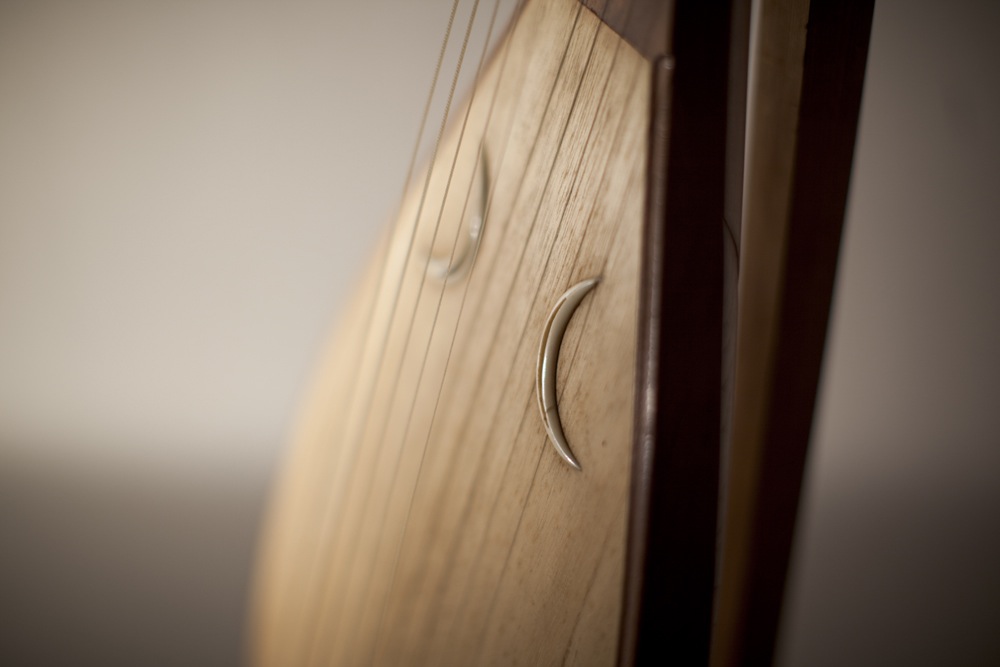
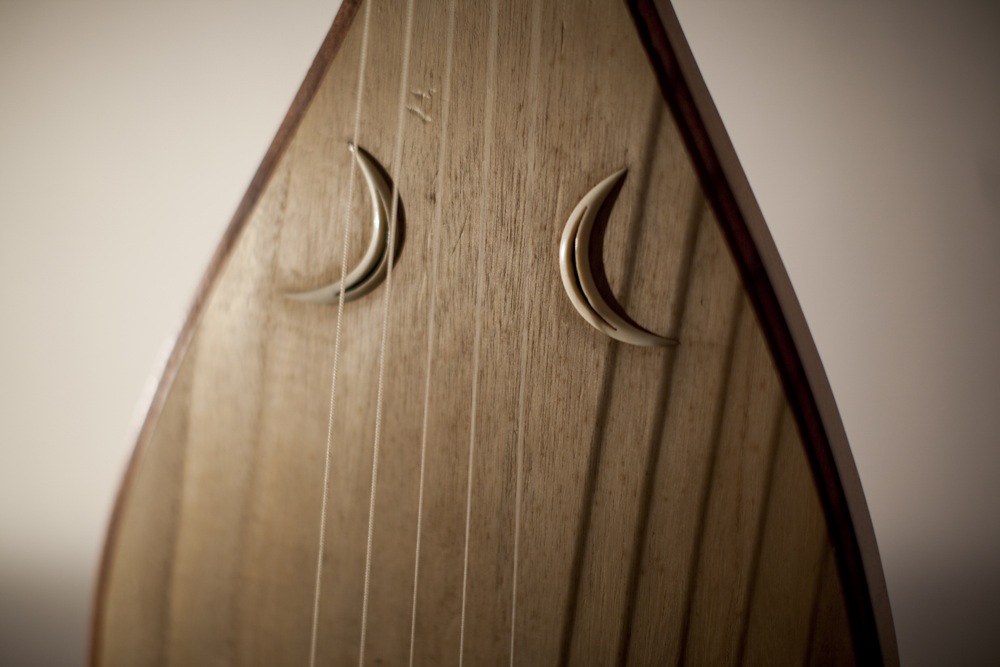

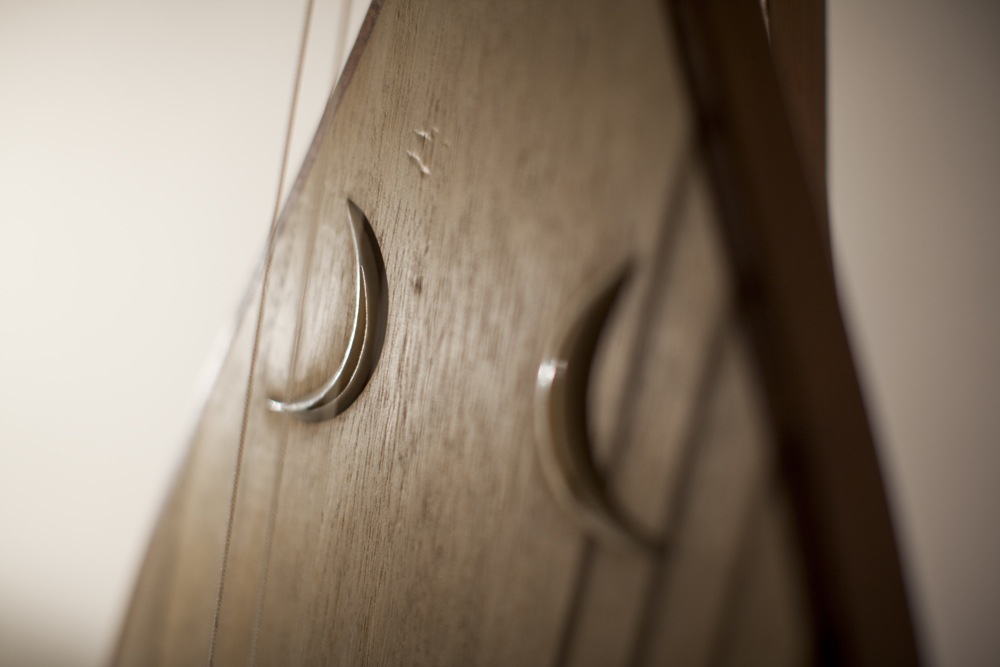
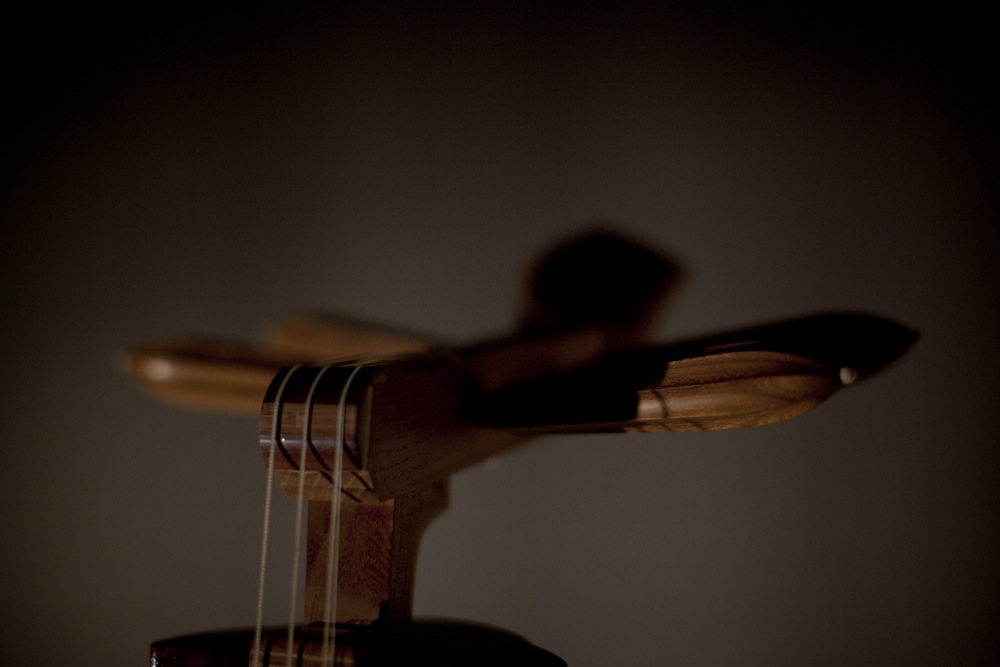
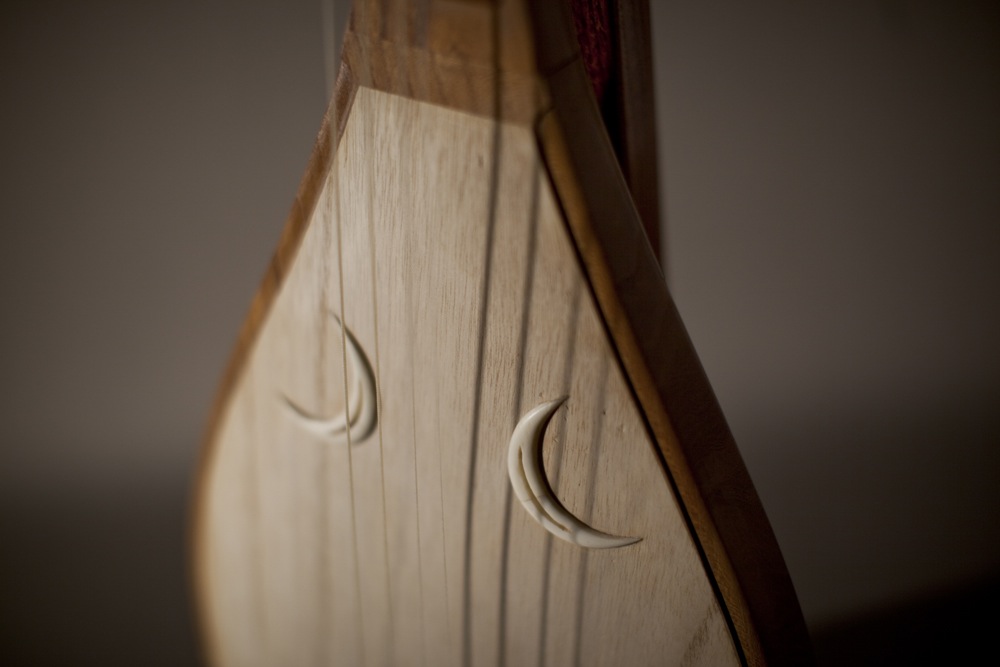
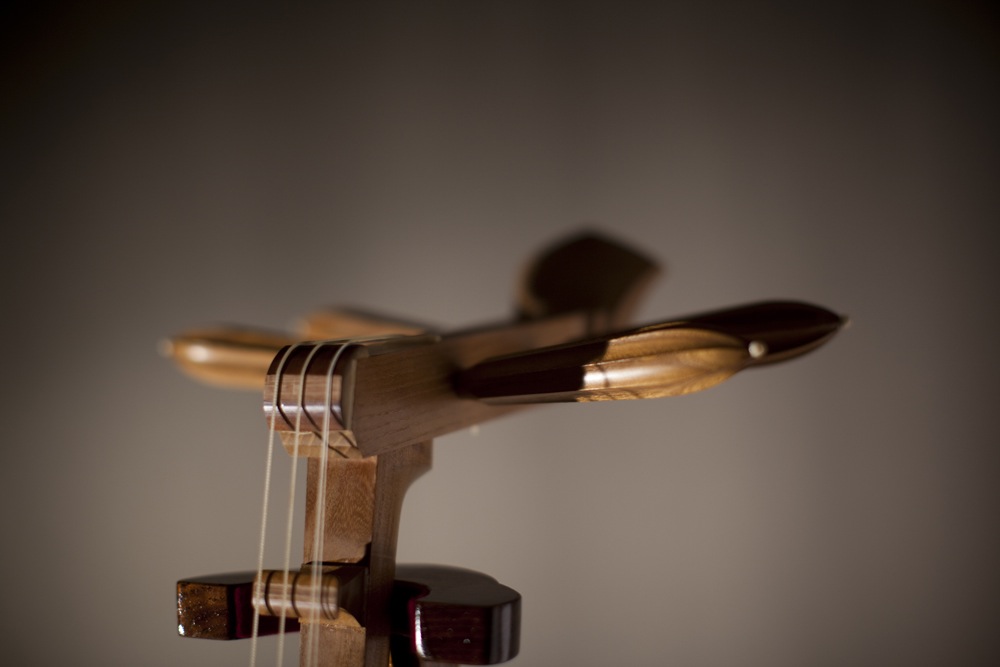









The Chinese lute pipa was introduced to Japan where it developed into several varieties, including the gaku biwa used in the gagaku genre, the mōsō biwa used by blind monks for prayers and storytelling, the Heike biwa used to accompany the Tales of the Heike stories, the Satsuma biwa which developed in the early modern period, and the Chikuzen biwa which flourished in the Meiji period.
As for ancient examples, only one straight-necked, five-stringed biwa remains in the Shosoin Repository, while the rest are basically four-stringed with a bent neck. In the early modern period, biwa with five or even more strings were devised, but even among the five-stringed varieties the fourth and fifth strings were often tuned to the same pitch.
Other than the gaku biwa, they are often used as accompaniment for narration, and are rarely played in ensemble with other instruments except in modern works.
The contents of the narration are often war stories, and the performers excel at masculine expression; the Satsuma biwa in particular has a playing technique that involves aggresively striking the plectrum down onto the instrument.
The biwa has tall frets, called jū or chū (lit. 'pillars'), and there are four-jū and five-jū varieties. Modern biwa can produce a variety of pitches by pushing down on the strings between the jū.
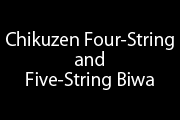



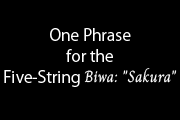
Performance and Explanation by Tahara Junko
※ When musical notation is used in each episode, it is written in absolute pitch.
Yamazaki Kyokusui (1906-2006), Tahara Junko, date of composition unknown
Based on the opening of Gion Shōja in Volume 1 of the Tales of the Heike
The late Yamazaki Kyokusui (Living National Treasure) composed the first four lines as the opening of the biwa piece Miyako Ochi(fleeing from the capital), to which Tahara Junko added the latter four lines (which are also from the Tales of the Heike).
The sound of the bell at Gion-shōja Temple
echoes the impermanence of all things.
The color of the flowers of the sal tree
represents the natural law that "beauty fades".
The proud only last as long
as a dream on a night in springtime.
Even the mighty eventually fall
like nothing more than dust in the wind.
Tachibana Asahimune I (1848-1919); year of composition unknown
From The Tales of the Heike, Volume 11, Nasu-no-Yoichi:
The Heike clan was on the sea, and the Genji clan was on land, and they were fighting fiercely. At the "hour of the rooster" (6pm), the sun had already set and the battle was over for the day, so both sides withdrew to their camps, when a small boat from the open ocean slipped between the Heike warships and began to approach the land. The boat was turned sideways at a suitable spot between land and ships, and a beautiful court lady pointed to a fan on her boat's segai* (the edge of her boat) and beckoned, "Try shooting at this." The one chosen from the Genji side was Nasu-no-Yoichi Munetaka, a young warrior of about twenty years old. As the boat and the fan were rocking violently in the strong winds that were blowing at the time, he rode his horse into the sea, prayed to both Shinto and Buddhist dieties for protection, and took aim at a moment when the wind had calmed. He fired a kabura-ya† (a whistling arrow), and with one magnificen shot, hit the fan perfectly.
※ Segai: A plank placed on the beam that protrudes outward from the side of the ship; a place to row or place the oar. Later it came to mean the edge of a ship.
※ Kabura-ya: an arrow made of wood, bamboo, or horn, shaped like a turnip, with a hollow center and several holes drilled into it, called a kabura. It makes a loud noise when it cuts through the wind. During wars, it was often used in ya-awase (complementing arrows), where arrows were shot from both camps to announce the start of battle.
Sumi Atsuki, composed 1985
Written specifically for the 1985 Agency for Cultural Affairs Arts Festival performance, "Tahara Junko Biwa Recital", and premiered at the same concert. This is the composer's first piece for biwa. This work was inspired by the novel Tsubaki-no-Umi-no-Ki(Record of the Sea of Camellias) by Ishimure Michiko, and the song that appears at the end is based on a short poem from the novel. The piece begins with the sound of a gentle breeze blowing through a modest garden overlooking the calm sea, and goes on to weave in the everyday sadness and hope of the people who live there. This piece explores a variety of the biwa's timbres through its tuning scheme and various performance techniques. (From the composer)
Lyrics by Satō Makoto, Music by Tahara Junko; composed ca. 1980
Shortly after I started playing the biwa, someone gave me the advice, "Since you've started to get into biwa playing, why not try to express yourself with it?", and they introduced me to a wide variety of writings, among which was this poem. The melody that came to mind was far from the typical image of "biwa music", but since it is sung with the biwa, it too is "biwa music". This song made me realize just how broad the biwa's range of expression is, and how open-ended it is as an instrument. (From the composer)